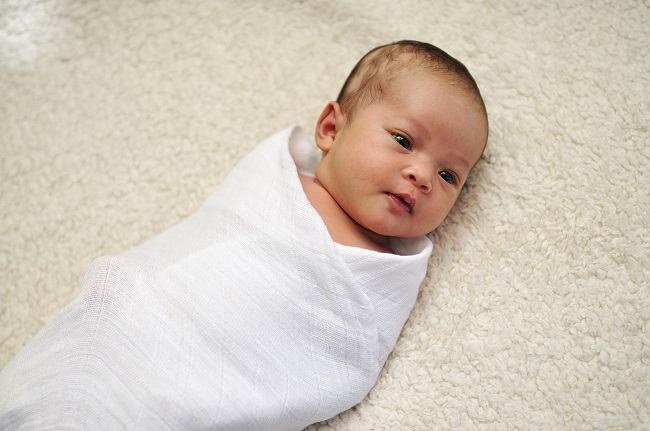This is the Danger if Wrong Swaddle Baby
Swaddling a baby is thought to make him feel comfortable and sleep better. However, be careful yes, Mother. If the way of swaddling is wrong, it can actually endanger the health of the baby, you know.
Baby swaddling is a technique of wrapping a baby's body, especially a newborn , with blankets or swaddles (swaddles). That said, this technique can make the baby feel comfortable, warm, and protected like being in the mother's womb or being hugged tightly.

Many parents choose to swaddle their babies because they are considered to provide several benefits, such as calming them down when they are fussy and having trouble sleeping, making them sleep soundly and not waking up easily, and not easily being disturbed from his rest time
Riks of Baby Swaddling that Need to Watch Out for
Behind the benefits, the tradition of baby swaddling also has a number of risks, especially if the swaddle method is wrong. The following are some of the dangers due to wrong swaddling techniques:
Pelvic deformity
Please note, swaddling with the aim that the baby's legs are not crooked is a very mistaken. If the swaddle is too tight with the legs pressed together and straightened, there is a possibility that the baby is at a higher risk of developing hip dysplasia. This condition makes the position of the baby's two feet different from each other, so that it can cause a limp when walking later.
When in the womb, the baby's legs are in a bent position and cross one another. If you force the baby's legs to straighten, the joints can shift and damage the cartilage.
Sudden death syndrome in infants (SIDS)
Sudden infant death syndrome (SIDS) is a term used to describe babies who are under one year old and appear healthy, suddenly die without a known cause. SIDS often occurs when babies are sleeping.
Babies are at risk of experiencing SIDS if when swaddled they change their position to their side or face down. SIDS can also occur if the baby's swaddle is too loose, so the cloth has the risk of shifting and covering the baby's mouth and nose. This can make it difficult for the baby to breathe.
In addition, swaddling babies that are too tight can overheat the baby and increase the risk of SIDS.
Tips for Safe Baby Swaddles strong>
To avoid the harmful effects of swaddling babies, mothers can follow the following ways to safely swaddle babies:
- Spread out the swaddling clothes, then fold a little at one corner. Place the baby in the swaddling cloth with his head on the edge of the folded corner. While holding your little one, bring one side of the cloth to his body, maybe the right or left side first, then tuck it under his body.
- Cover the baby's legs by folding the bottom side of the swaddling cloth up. Give a little space so that the legs can move.
- Bring the other side of the cloth to the little one's body, then tuck it in so that the neck and head are not wrapped in cloth.
- After the baby is swaddled, make sure Mother puts The little one is in a supine position. Also, avoid using pillows until the baby reaches two
Some babies prefer their arms free from swaddles. If your little one prefers this position, just follow the instructions for swaddling the baby above, but tuck each corner of the blanket under his armpits, not over his shoulders. the right way, Mother. It's best if you practice beforehand until you can swaddle your baby properly.
It is recommended that you don't swaddle your little one while breastfeeding so that her hands can move freely to touch and explore. Besides that, if your little one is 2-3 months old, you shouldn't need swaddling anymore, OK? The thing is, at this age the baby has started to actively move and change positions during sleep.
If you are still unsure about the results of the swaddling, you can consult a doctor or midwife and ask them to teach you how to swaddle the baby properly.
Label : Family
Comments
Post a Comment